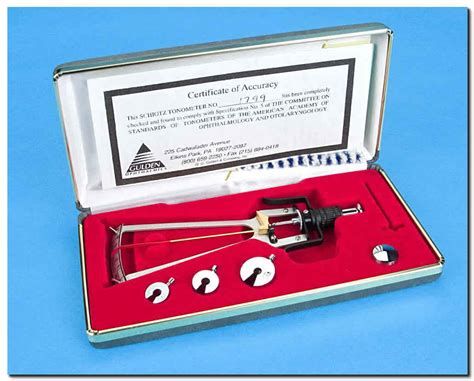Special Price ₹1,772.10 was ₹1,980.00
The Schiøtz Tonometer is a medical instrument designed to measure intraocular pressure (IOP), which is crucial for diagnosing and managing glaucoma. Developed by Norwegian ophthalmologist Hjalmar August Schiøtz in 1905, this device has been a fundamental tool in ophthalmology for over a century.
Key Features:
-
Indentation Measurement: The Schiøtz tonometer operates on the principle of indentation tonometry, assessing IOP by measuring the depth of indentation on the cornea caused by a known weight.
-
Mechanical Design: It consists of a curved footplate placed on the cornea, a weighted plunger that indents the corneal surface, and a scale that provides readings based on the plunger's displacement.
-
Durability and Simplicity: The device is known for its durability, simplicity, and lack of electronic components, making it suitable for various clinical settings, including remote or mobile clinics.
Specifications:
-
Scale Range: Typically measures on a scale from 0 to 20 subdivisions, with an additional 0 to -1 subdivision for finer measurements.
-
Weights: Comes with a set of weights, commonly 5.5 g, 7.5 g, and 10 g, allowing for adjustments based on the required
-
measurement range.
-
Usage:
-
Preparation: Ensure the instrument is clean, dry, and sterilized. Perform a calibration check using the provided test block to confirm accuracy.
-
Anesthesia: Administer a topical anesthetic to the patient's eye to prevent discomfort during the procedure.
-
Positioning: With the patient in a supine position, gently place the footplate of the tonometer on the cornea, ensuring proper alignment.
-
Measurement: Allow the weighted plunger to indent the cornea. Read the scale to determine the indentation depth, then use the conversion table to translate this reading into IOP in mmHg.
-
Cleaning: After use, clean the instrument thoroughly with alcohol to maintain hygiene and prevent cross-contamination.
-
Materials: Constructed with high-quality materials, including an agate bearing for extended service life and a red pointer for easy scale reading


Log In